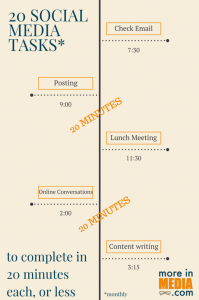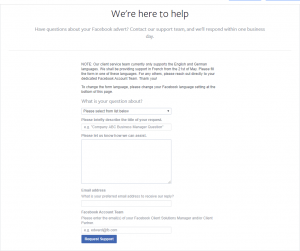AI is only widening the chasmic skills gap. Here’s how to meet the challenge
Transform your upskilling strategy with these 5 tips from a job training leader. Stay ahead of the AI skills gap and ensure your employees are equipped for success.
Today’s business landscape is challenging and rife with change. Budgets are tight, competition is fierce, the global talent shortage persists, and new technologies like generative artificial intelligence (AI) are shaking things up, creating both exciting opportunities and an urgent need for upskilling.
It has arguably never been more important to have an effective training strategy in place. Many companies recognize the vital role employee learning plays in the success of their business, so it’s unsurprising that the learning management system (LMS) market is expected to reach a staggering 51.9 billion USD by 2028.
But what should companies be doing now to support this objective?
Here are five ways leaders can refresh their upskilling efforts to ensure employees are getting the education they need, and to support a culture of continuous learning and development within their organization.
Use assessment tools to uncover employees’ needs and motivations
It’s impossible to help someone if you don’t know what they need. This simple fact explains why assessment tools are so critical and should serve as the foundation of any training program. Too often, companies apply a one-size-fits-all approach to employee learning, which can lead to redundancies, disengaged employees, and workers that are either overqualified or underqualified for their role.
Instead, organizations should leverage assessment tools to get a comprehensive picture of where each employee stands with their current skill set. Assessment tools help businesses identify opportunities for upskilling or reskilling, measure learning progress, track the application of new skills in the workplace, and guide individuals along their career paths.
Importantly, assessment tools can also uncover what motivates employees so that companies can tailor their learning programs (more on this later) for optimal outcomes. In some ways, what motivates individuals is even more important than their skill sets: With the right resources, most people can be brought up to speed on just about anything, but if they’re not passionate about what they’re doing, they’re less likely to have a meaningful impact on the business.
Embrace generative AI-powered tools (mindfully)
AI is here to stay: According to Stanford University, there are over 350,000 AI projects underway, many of which feature generative AI capabilities that are (or will soon be) woven into the tools and applications we use today. As with any new technology, the promise of AI is accompanied by a strong need for training and education. Both technical and non-technical workers will need to be skilled, upskilled, and reskilled on how to use, build, and effectively leverage AI-powered systems and tools.
Simultaneously, AI-infused tools can help organizations take their training efforts to the next level through personalized learning, deeper engagement, boosted efficiency, and inclusive access. AI can also tailor learning experiences to employees’ individual needs by automatically adjusting difficulty levels, recommending helpful resources, and providing customized feedback.
The potential benefits of AI are vast, but organizations must be mindful regarding adoption—with so many different solutions available, companies risk overwhelming employees with new information and capabilities, inadvertently diminishing the value they’re aiming to provide. The key is to start slow and offer plenty of support as employees familiarize themselves with these new tools.
Don’t underestimate the power of incentivization
Many people are already overloaded in their daily roles, and asking them to learn something new—while exciting—can also seem overwhelming. Incentivization is a simple yet effective way to motivate employees and reignite their spark for learning.
One of the most straightforward ways to encourage employees to engage with their training content is to keep it fun and interesting. Tools like leader dashboards provide real-time insights into training progress, achievements, and rankings, letting employees track their progress and performance against that of their peers for some friendly competition. Additionally, gamifying training material through points, levels, challenges, and rewards, can make learning more enjoyable and interactive.
Finally, there’s no better incentive than tangible rewards. Some companies might opt to implement a skill points system that lets employees earn points for skills learned that can then be redeemed for prizes like gift cards, extra time off, or bonuses.
Create a tailored upskilling approach to enhance engagement
Companies should tailor trainings to the specific groups of employees they’re educating, down to the individual level if necessary. For example, learning might be tailored to generational differences: Gen Z employees might get the most value from self-led programs that feature “bingeable” snippets of content—think short-form, Tik Tok-esque videos. Conversely, millennials may prefer more structured, long-form, instructor-led content. In other instances, training might need to be tailored for accessibility, neurodiversity, or some other factor.
Companies should invest in training platforms that can accommodate a wide range of learning styles seamlessly so that everyone gains the skills and knowledge they require. This also ties back to why assessment is critical; having a baseline understanding of each individual helps to create the most impactful training program for each person’s needs.

Don’t forget to have fun
We’ve touched on this but it’s worth emphasizing. Play and fun are crucial in learning and training as they enhance engagement, motivation, and retention.
Through playful activities, learners experience a stimulating environment that fosters curiosity and creativity, making complex concepts more accessible and less intimidating. Fun elements reduce stress, encourage exploration, and promote a positive attitude towards learning, leading to better problem-solving skills and deeper understanding. Additionally, play facilitates social interaction and collaboration, essential for building practical skills and teamwork. Integrating enjoyment into educational and training processes not only enriches the learning experience but also cultivates a lifelong passion for knowledge.
What does fun look like when it comes to professional training? We’ve already mentioned a few tools widely available, but before we re-state a few, just consider a playful mindset: Training does not have to be serious and the process of learning should be something people enjoy so that they’ll develop a continuous learning and growth mindset. Here are some examples of things you can find in many platforms today that are proven to boost engagement and retention:
- Gamification.
- Badging and credentialing.
- Leaderboards.
- Incentives.
Effective training programs do more than just upskill and reskill your workforce; they promote a culture of continuous growth and learning that leads to happier employees and therefore greater retention. Using the strategies above, organizations can strengthen their training efforts and reap the benefits of not only better performance, but a workforce that is engaged and ready to take on new opportunities that propel the business forward.
ABOUT THE AUTHOR
(6)
Report Post








